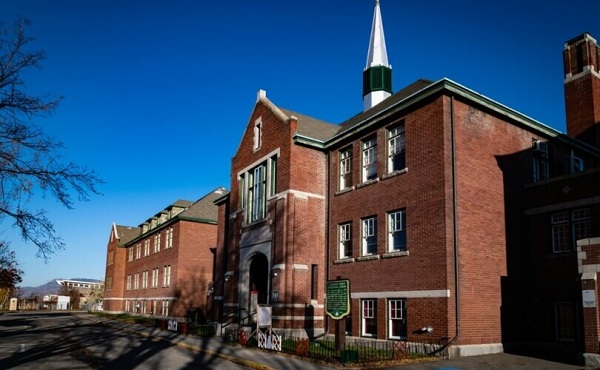COVID-19
Australian Senate launches landmark excess death inquiry following COVID shot rollout

From LifeSiteNews
By David James
The Australian Senate has initiated an inquiry into the surge of excess deaths since the 2021 COVID vaccination program, marking the first formal parliamentary examination of this issue worldwide.
The Australian Senate has begun an inquiry into excess deaths since the mass vaccination program of 2021 in an effort to isolate the causes of what is described as the worst level of excess mortality since World War II. It is being touted as the first instance in the world of a Parliament formally examining the issue.
The successful motion, brought by United Australia Party (UAP) Senator Ralph Babet, was his fifth attempt to launch a parliamentary inquiry in two years. Previously, the left-wing Labor government and the Greens had blocked the motion, without explaining why. The Senate’s Community Affairs References Committee is now required to investigate the factors contributing to the abnormally high mortality. The report is expected by the end of August.
It will be a difficult task, and the likelihood that there will be any admissions of wrongdoing by government bureaucrats and politicians is vanishingly small, even if the findings compellingly point to the vaccination program as the reason behind the excess deaths.
A range of excuses and misdirection will be used to confound the picture. The most obvious is the point that correlation does not prove causation. It will likely be argued that just because the excess deaths happened at about the same time as the mass inoculations it does not necessarily mean there is a causal connection. This is true, but it only means that the evidence is circumstantial, which is valid and can be conclusive, especially when there is no obvious alternative explanation and similar surges in deaths have been observed in most countries that were heavily vaccinated.
READ: US gov’t scientists received $710 million from Big Pharma during COVID, watchdog finds
There are likely to be arguments about the precision of the data and the establishment of an appropriate base line. There is little doubt about the overall trend. The Australian Actuaries Institute sounded the alarm in early 2023. But a favoured tactic of bureaucrats is to argue over fine detail in order to distract from the big picture.
There will thus need to be work to get precise data, if that is possible. For example, according to Babet on March 26 this year, the Therapeutic Goods Administration’s (TGA) provisional mortality figures “confirm that to November 2023 there were 15,114, or 10 percent, more deaths than the baseline average.”
Different figures are in an article in globalresearch.ca (referencing figures from Mortality Watch). The excess death figures were below 4 percent in 2021, just under 14 percent in 2022, and just over 7 percent in 2023.
The Australian Bureau of Statistics (ABS) has different figures again: -3.1 percent in 2020 (when politicians were saying a deadly pandemic was ravaging the country), 1.4 percent in 2021, 10.9 percent in 2022, and 9.1 percent in 2023. These inconsistencies will have to be resolved.
Ed Dowd, author of Cause Unknown: The Epidemic of Sudden Deaths in 2021 & 2022, observes that Australian data has several limitations, one of which is that it “does not allow us to observe the excess mortality in younger age groups with sufficient detail.” His figures, which are broken down by age, show that the excess deaths were worst for most ages in 2022 and then declined in 2023. The exception was the 75-84 age bracket, where excess deaths rose in 2023.
Another likely tactic is that it will be argued that the problem is “multi-factorial”: that the deaths were caused by many things. This will have some truth to it – the lockdowns probably led to increased suicide rates, for example – and it is likely that it will be used to confuse the picture. But it will not explain the size of the excess mortality, which is the equivalent of what happens in a war. To explain that a novel reason is required, not causes of death that have existed for a long time.
READ: UK study of children shows heart inflammation develops after COVID vaccination, not infection
The aggregate mortality statistics are not the only relevant data; there are other pieces of evidence that can help fill in the picture. One is that the excess deaths, which have occurred in all age groups, do not seem to have been the result of COVID itself. According to the ABS in 2022, when the excess deaths were at their peak, the median (average) age of death for COVID-19 was 86, significantly higher than average life expectancy in Australia. That suggests relatively few working age and younger people died from the disease. So, what killed them?
Another pointer is a report that there have been 20 percent more sudden cardiac arrests in Victoria than five years ago – and more than 95 percent of the patients are dying. “Of the 7,830 people whose hearts stopped beating due to this condition in 2022/23, just 388 survived, the latest Ambulance Victoria figures reveal,” reports the Herald Sun. The ABC, the national broadcaster, reported that many of the heart attack victims are young, but did not investigate any further.
The state government’s response has been to buy more defibrillators. There has been no mention of the vaccines as a possible cause despite accumulating evidence that the heart conditions myocarditis and pericarditis are the most commonly reported adverse events associated with the vaccines.
Especially telling has been the TGA’s response. They simply stopped reporting on myocarditis and pericarditis. Such tactics are typical of Australian bureaucrats’ efforts to protect themselves.
The biggest challenge will be analyzing causation of the deaths in an environment where most of the people providing the data have a vested interest in not having their actions exposed, especially when the evidence might show that they have committed a homicide. Australian doctors and academics are also under threat of losing their careers if they voice their doubts about the vaccines. They, too, are hardly likely to be eager to take responsibility for deadly mistakes.
It is more likely that the exposing of the truth in Australia will have to wait for the insights of experts such as Dr. Francis Boyle, who was responsible for drafting the United States’ 1989 Biological Weapons and Antiterrorism Act. He recently testified in a Florida court case that the “mRNA nanoparticle injections” are “biological weapons and weapons of mass destruction.”
If true, it seems very unlikely that Australian health authorities knew. The TGA admitted that it just followed the FDA’s recommendations throughout the crisis. But given that it is supposed to be their job to know it is no excuse.
COVID-19
FDA requires new warning on mRNA COVID shots due to heart damage in young men

From LifeSiteNews
Pfizer and Moderna’s mRNA COVID shots must now include warnings that they cause ‘extremely high risk’ of heart inflammation and irreversible damage in males up to age 24.
The Trump administration’s Food and Drug Administration (FDA) announced it will now require updated safety warnings on mRNA COVID-19 shots to include the “extremely high risk” of myocarditis/pericarditis and the likelihood of long-term, irreversible heart damage for teen boys and young men up to age 24.
The required safety updates apply to Comirnaty, the mRNA COVID shot manufactured by Pfizer Inc., and Spikevax, the mRNA COVID shot manufactured ModernaTX, Inc.
According to a press release, the FDA now requires each of those manufacturers to update the warning about the risks of myocarditis and pericarditis to include information about:
- the estimated unadjusted incidence of myocarditis and/or pericarditis following administration of the 2023-2024 Formula of mRNA COVID-19 shots and
- the results of a study that collected information on cardiac magnetic resonance imaging (cardiac MRI) in people who developed myocarditis after receiving an mRNA COVID-19 injection.
The FDA has also required the manufacturers to describe the new safety information in the adverse reactions section of the prescribing information and in the information for recipients and caregivers.
Additionally, the fact sheets for healthcare providers and for recipients and caregivers for Moderna COVID-19 shot and Pfizer-BioNTech COVID-19 shot, which are authorized for emergency use in individuals 6 months through 11 years of age, have also been updated to include the new safety information in alignment with the Comirnaty and Spikevax prescribing information and information for recipients and caregivers.
In a video published on social media, Dr. Vinay Prasad, director of the Center for Biologics Evaluation & Research Chief Medical and Scientific Officer, explained the alarming reasons for the warning updates.
While heart problems arose in approximately 8 out of 1 million persons ages 6 months to 64 years following reception of the cited shots, that number more than triples to 27 per million for males ages 12 to 24.
Prasad noted that multiple studies have arrived at similar findings.
Bruce Dowbiggin
The Covid 19 Disaster: When Do We Get The Apologies?

Breaking: Drs. Bonnie Henry and Theresa Tam have been appointed to the Order of Canada in recognition of their role in the country’s response to the COVID-19 pandemic.
And so the game of covid liar’s poker has more winners. It’s like awarding the captain of the Titanic the Nobel Prize for his work on floatation. As we now know these two— and the other WHO finger puppets in Canada— made the Covid 19 episode worse, not better, with their prescription for panic, positives and punishment. Even as they knew the truth about the limits of the virus and the efficacy of vaccines they continued to spew fallacious PCR data on the extent of the sickness and who was at risk.
Put simply, to protect vulnerable seniors they said kids were also at great risk. Which was unconscionable.
In this they encouraged Justin Trudeau in his worst instincts, combining his father’s insouciant disregard for civil rights (sending in the police) with his mother’s mental stability. Propped up by Team Tam and its U.S. allies such as Anthony Fauci, this hysteria peaked with a sequestered PM crushing the Truckers Convoy’s vaccine protest with emergency measures and destruction of civil liberties.
Lest you wonder, this overreach was recognized at the time. Justice Maclean wrote at the trial of Convoy organizers, “Defendants & other persons remain at liberty to engage in a peaceful, lawful & safe protest”. On Feb. 16, he continued a no-honking order, again writing: “Defendants & other persons remain at liberty to engage in a peaceful, lawful & safe protest.”
The leaders of the Convoy, lynched by Canadian media’s phoney claims of right-wing American interference, are still fighting jail time on charges of nuisance. While violent criminals are routinely released on bail or absolved.
Justice Richard Mosley later concluded that while the convoy was a disruption of public order, it didn’t constitute a national emergency and invoking the act “does not bear the hallmarks of reasonableness — justification, transparency and intelligibility.” But in real time Team Tam made no attempts to correct the wilder misgivings about Covid (lockdowns, mandatory vaccines). Trudeau was given a hall pass. Needless to say the purchased media made things infinitely worse regurgitating these mistakes.
In short, they knew better but hid the truth. But why pick on Henry and Tam? Under Trudeau and his wingman Jagmeet Singh this was the golden age of lies and prevarications in Canada and the U.S. No apologies were ever offered when the truth emerged.
As we’ve noted before, Trudeau cried with a teddy bear carefully positioned over 751 alleged unmarked graves in a known Catholic cemetery that the local Cowessess band abandoned. The Liberal government knew the claim of 215 “children’s graves” was false, and still ran with it to get Trudeau his photo-op. Naturally the CBC Media Party played (and still plays) accomplice in this farce as the Canadian flag was lowered to half-mast for six months and Trudeau ratted out Canada at the UN as a genocidal state.
There were more, plenty more Trudeau scandals that media endorsed and then stood by even as the truth was revealed. SNC Lavalin. We Charity. Arrive Can app. Firing indigenous justice minister. Chinese drug infiltration/ money laundering. Nazi Celebrated in Parliament. Welcome To Canada immigration. Nova Scotia massacre. McKinsey Consultation. Blackface. And so on.
And were there apologies when it came time to make the Trudeau Liberals accountable? No, they staged a media circus over Donald Trump’s assertion of 51st state. All the fake news and deliberate lies went poof, allowing Mark Carney to seamlessly assume the PM job.

Lest We Forget Pt. 2 it was not exclusive to Canada. As we are now learning: Barack Obama and Joe Biden sat in an August 3, 2016 Situation Room briefing and said, yeah, let the highest officials in our administration fabricate evidence to frame the opposing party candidate Donald Trump. Obama. Biden. Comey. McCabe. Strzok. Page. Rice. Etc.
Knowingly using the faked Clinton campaign ‘Steele Dossier’ hoax, they launched a federal investigation into the Trump presidential campaign that lasted three years after Trump was sworn in as the nation’s 45th President. Arresting and jailing his partners and colleagues. Inventing fake stories for their media enablers. Let’s repeat that. Saint Obama knew there was criminal activity in the process but let his henchmen try to fix an election.

And when the ruse was uncovered no one apologized. No one in authority was fired or jailed. The Pulitzer Prizes awarded to the NT Times and Washington Post for disseminating the DEMs scandal were not rescinded. Nor were they given back by the lying newspapers.
The concerted frauds of the same U.S. DOJ, FBI and State Departments were fed by media and accepted by gullible publics in Canada and America. The fantastical 2020 election results were likewise drummed into the public irrespective of the sudden “appearance” of 27 million new votes during a pandemic.
It was all a fitting preamble to the 2020-2024 Biden senility scandal with Democrats running a man they knew was in full dementia. In the 2020 election Biden was hidden from public view, the better to let media attack Trump for spurious charges launched by partisan DNC attorneys in Georgia, New York and DC. Even then it took the suppression of Hunter Biden’s incriminating laptop just prior to the election to get his father elected.

The dance of denial continued in Biden’s term as he physically and mentally deteriorated before the American public. But inquiries about who was running the government if not Biden were harshly suppressed. Media lackeys noted he was sharp as a tack mentally and in tip-top physical condition when he wasn’t falling down stairs.
It took the stunning 2024 debate debacle with Trump to strip away the lies about Biden’s health, now said to be advanced prostate cancer and Parkinson’s. The media, caught in their own lies about Biden’s condition, offered no apologies and tried to blame Biden’s stutter for the performance.. Right.
These were the two greatest U.S. hoaxes from people who’d cried hoax incessantly. They were hardly the only abuse of public trust. Some of the perpetrators are said to now be under investigation— even as they hand out awards to each other. The media’s credibility is shattered and yet they still blame others. Jaded voters are taking a “we’ll see” approach. But expectations of any change in DC or Ottawa are limited.
As Stephen Taylor posted on X: “Turns out for Liberals, ‘elbows up’ just means ‘noses up’ like it always has.”
Bruce Dowbiggin @dowbboy is the editor of Not The Public Broadcaster A two-time winner of the Gemini Award as Canada’s top television sports broadcaster, his new book Deal With It: The Trades That Stunned The NHL And Changed hockey is now available on Amazon. Inexact Science: The Six Most Compelling Draft Years In NHL History, his previous book with his son Evan, was voted the seventh-best professional hockey book of all time by bookauthority.org . His 2004 book Money Players was voted sixth best on the same list, and is available via brucedowbigginbooks.ca.
-

 COVID-1922 hours ago
COVID-1922 hours agoFDA requires new warning on mRNA COVID shots due to heart damage in young men
-

 Business20 hours ago
Business20 hours agoCarney’s new agenda faces old Canadian problems
-

 Daily Caller17 hours ago
Daily Caller17 hours agoBlackouts Coming If America Continues With Biden-Era Green Frenzy, Trump Admin Warns
-

 Indigenous21 hours ago
Indigenous21 hours agoInternal emails show Canadian gov’t doubted ‘mass graves’ narrative but went along with it
-

 Bruce Dowbiggin23 hours ago
Bruce Dowbiggin23 hours agoEau Canada! Join Us In An Inclusive New National Anthem
-

 Business2 days ago
Business2 days agoCBC six-figure salaries soar
-

 Addictions2 days ago
Addictions2 days agoCan addiction be predicted—and prevented?
-

 Addictions2 days ago
Addictions2 days agoMore young men want to restrict pornography: survey

